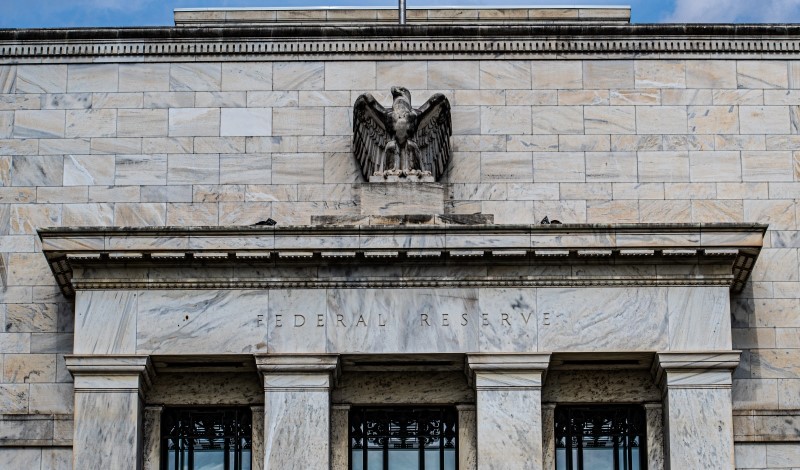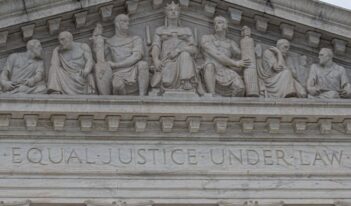
The Supreme Court upholds the funding structure of the Consumer Financial Protection Bureau.
In its 7-2 majority opinion in Consumer Financial Protection Bureau (CFPB) v. Community Financial Services Association of America (CFSAA), the Supreme Court held that Congress may provide indefinite funding outside the annual appropriations process to federal regulatory agencies. That holding is correct and important. Although placing time limits on agency funding is generally a good idea, the Constitution does not require it, and concluding otherwise could have opened the door to biased and erratic court decisions in the future.
Even better, despite upholding flexible funding arrangements in this instance, the Court’s reasoning could support recognizing important limits on executive unilateralism in the future—particularly if courts and other interpreters follow Justice Elena Kagan’s four-justice concurring opinion in looking to historical practice as a key interpretive authority.
In the Appropriations Clause, the U.S. Constitution directs that “no money shall be drawn from the treasury, but in consequence of appropriations made by law.” As I have argued elsewhere, this provision properly means that Congress may control any “resource-dependent” authority of the government—any power, such as the authority to enforce federal law, that Presidents could not meaningfully exercise on their own without additional government resources. To take action, regulatory agencies therefore must not only have valid legal authority, but also an appropriations statute providing the requisite funds.
Agencies’ resulting dependence on congressional funding gives Congress an ongoing say in agency operations, and Congress normally amplifies its power by limiting the amount and duration of agency appropriations. Developed by the British Parliament as a means of controlling the royal fiscal-military state, this practice of time-limited appropriations has been the norm in the United States since the beginning of the Republic. Yet Congress has not always imposed time limits; Social Security benefits, for example, come from a permanent appropriation. All the Constitution requires is some appropriation by law, meaning some statutory provision of funds.
In CFPB v. CFSAA, the Supreme Court correctly embraced all these principles, and indeed it articulated them more clearly than in any prior decision. Concerned that well-heeled financial institutions might seek to influence the annual appropriations process, Congress authorized the CFPB to draw its funding instead from the Federal Reserve, which itself derives its budget from fees and profits rather than annual appropriations. This choice may have been foolish: Given the breadth of the CFPB’s powers, accountability to Congress through annual appropriations might have been valuable. Under the Constitution, however, the choice was Congress’s to make.
Holding otherwise would have required reading some amorphous, functional limit on Congress’s funding choices into the word “appropriation.” Making the case for this view, Justice Samuel Alito’s dissent, joined by Justice Neil Gorsuch, rehearsed the appropriations power’s historical development and emphasized the practical value of time-limited appropriations. Yet the dissent never articulated any administrable definition of a valid “appropriation.” The dissent’s proposed holding would thus have been highly manipulable in practice, opening the door to biased application in future cases.
As I argue in a forthcoming book, our polarized political moment requires courts to favor “symmetric” constitutional understandings, meaning understandings that are amenable to consistent and predictable application across varied political contexts. The Supreme Court has fallen short of this goal in recent decisions by recognizing an amorphous “major questions” limit on agency authority and varying the intensity of arbitrariness review (the requirement that agencies rationally explain their actions) in politically salient cases. The Court was wise not to add another subjective administrative law doctrine to this list.
The majority’s opinion in CFPB v. CFSAA is important for another reason, too. Despite granting flexibility to an executive agency in this instance, some aspects of the majority’s reasoning could reinforce key limits on executive unilateralism.
In particular, the Court noted early in its opinion that the Federal Reserve’s funding falls within the Appropriations Clause even though it is not technically part of the U.S. Treasury. Noting that the Fed must deposit into the federal treasury any surplus funds not transferred to the CFPB, Justice Clarence Thomas wrote for the majority: “Whatever the scope of the term ‘Treasury’ in the Appropriations Clause, money otherwise destined for the general fund of the Treasury qualifies.”
The Court thus came close to recognizing that Congress’s appropriations power extends beyond specific treasury accounts to all funds under U.S. government control. This broad understanding of the “treasury,” forecloses end runs around Congress’s power of the purse through use of outside resources. And even though the Court did not quite embrace this view wholesale in CFPB v. CFSAA, its reasoning will produce much the same result, because a general federal statute known as the Miscellaneous Receipts Act normally directs that “an official or agent of the Government receiving money for the Government from any source shall deposit the money in the Treasury as soon as practicable without deduction for any charge or claim.”
The Court’s broad understanding of “treasury” funds is important because executive officials have sometimes resisted it. One aspect of the Iran-Contra scandal in the 1980s was an effort by national security officials to provide forbidden foreign aid with funds under their control that Congress did not provide. By foreclosing such tactics, the Court’s reasoning in CFPB v. CFSAA should help maintain executive accountability to Congress in the future.
Reasoning in Justice Kagan’s four-justice concurrence could provide still more help in maintaining appropriations controls on the executive branch.
Whereas Justice Thomas’s majority opinion relied entirely on originalist reasoning, Justice Kagan’s opinion emphasized that a “continuing tradition”—one reflected in enactments from across U.S. history—supported the same result as well. This additional rationale, and its apparent embrace by an ideologically mixed group of justices, is important because many key questions about Congress’s appropriations power may not carry such tidy originalist answers. Although both the majority opinion and the dissent stressed the historical importance of parliamentary appropriations in limiting royal authority, the U.S. Constitution, unlike England’s, does not subject all executive authorities to ongoing inter-branch negotiation. It instead fixes in place certain presidential powers such as the power to pardon criminal offenses, command the military, and ensure faithful execution of the laws.
As I have explained elsewhere, fitting the Constitution’s executive powers together with Congress’s power of the purse presents an interpretive puzzle—one that the framers may not have fully appreciated. Although principled answers are nonetheless possible, developing them requires attention not only to the formal constitutional structure, but also to what I have called the “deep working assumptions reflected in entrenched constitutional practice.” Holding future presidents to these limits may prove both difficult and important because our current polarization gives Presidents powerful incentives to advance adventurous theories of unilateral power instead.
Finally, attention to historical practice in this area could matter in yet another way.
Presidents today face temptations not only to advance bold constitutional theories, but also to play fast and loose with appropriations limits themselves. And despite longstanding recognition of Congress’s formal authority to limit appropriations, legal limits on executive spending were honored in the breach for much of the United States’s history. In 1806, Representative John Randolph complained that “those who disburse the money” provided by Congress “are like a saucy boy who knows that his grandfather will gratify him, and over-runs the sum allowed him at pleasure.” This problem of “coercive deficiencies”—of agencies exceeding their budgets and counting on Congress to make up the shortfall—continued for at least the first 150 years of the country’s history.
Scholarship to date has shed little light on precisely how and why Congress succeeded in establishing more effective control over executive spending. I explored this question preliminarily in a workshop paper and am now pursuing it further. Eloise Pasachoff has begun an exciting book project exploring current mechanisms of fiscal accountability within executive agencies. This research may carry important lessons for maintaining accountable and responsive government today, but those lessons, again, will come primarily from evolved governmental practices, not the Constitution’s original understanding.
In sum, the majority’s originalist reasoning in CFPB v. CFSAA led it to the correct conclusion that Congress holds flexible authority to fund federal agencies as it sees fit. Amid our current turbulent politics, we should be grateful that the Court declined to read into the Constitution an amorphous and subjective constraint on Congress’s appropriations power. Given current incentives for Presidents to defy legal limits, however, we should also be grateful that both the majority and the concurrence point the way to recognizing some important constraints on unilateral executive action.
This essay is part of a series, titled The Supreme Court’s 2023-2024 Regulatory Term.




